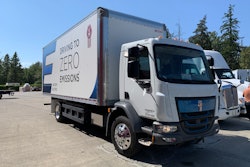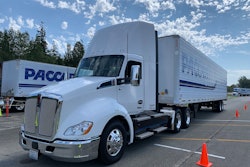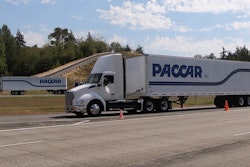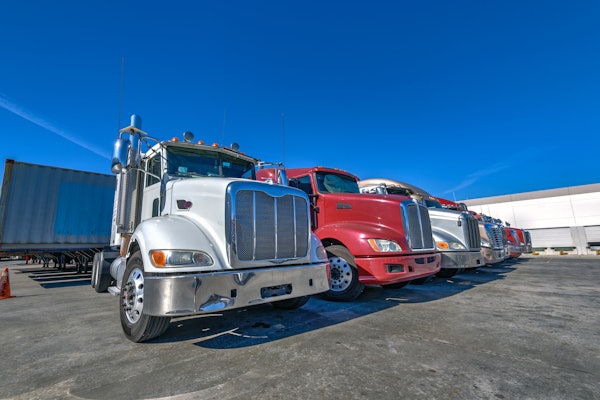
Summer’s gone and with it comes some interesting insights into EV expansion.
Let’s start with increasing costs of electricity and ongoing shortages of same, particularly in highly populated and pro-EV states like California and Texas.
In case you missed it, the U.S. Energy Information Administration reported that the average cost per kilowatt-hour used in the commercial sector this past June in the Golden State rose roughly 11% year-over-year from 20.24 cents per kWh to 22.50 cents. That’s higher than the rate of inflation for the consumer price index which increased 9.1% during that same time, according to the Bureau of Labor Statistics.
And it's not getting any better for 2023. Pacific Gas & Electric, which serves the heart of the nation’s EV revolution in Northern California, expects the average customer bill to increase 15.6% next year. Wildfire mitigation efforts have been behind much of the rate hikes.
Texas has fared far worse. Though commercial electricity is less expensive in the Lone Star State than California, rates there shot up from 7.57 cents per kWh to 9.75 cents, a 29% jump from from June of 2021 to June 2022. Austin, home to an expanding market of EVs and Tesla's U.S. headquarters, is bracing for a possible 7.6% rate hike next year, according to power provider Austin Energy.
But it's not just the rising cost of electricity in California, Texas and elsewhere that have some wondering about the future of EVs, it’s also electricity shortages.
Though most of the headlines this past summer focused on grid constraints in California, lack of power during some tough heatwaves also became an issue for Texas.
The Electric Reliability Council of Texas, which operates the state’s grid, asked consumers to conserve electricity on July 11 and July 13 by “turning up your thermostat a degree or two, if comfortable, and postponing running major appliances or pool pumps during afternoon peak hours.”
[Related: California's energy flex alerts worked but that's before thousands of electric trucks roll out]
While ERCOT didn’t say anything about EV charging it did refer consumers to the Public Utility Commission’s energy conservation website, powertosavetexas.org, to get additional conservation tips.
People typically want to help when there’s a problem, especially if they’ve been summoned by the state’s grid operator to cut back on power. With more EVs in Texas than ever before, charging during ERCOT’s Conservation Appeals becomes a more delicate issue: is it okay to charge or not? Do I risk being the guy who triggers a power outage at Codependent Cocktails & Coffee and elsewhere while plugging in my Tesla?
Austin alone now has nearly 17,000 registered EV owners and 1,300 charging ports, according to NBC affiliate kxan.com. However, neither ERCOT or PUC offer any tips on how to best manage EV charging during these Conservation Appeals.
 Zeems Solutions in Southern California leases all-electric Class 2b – 8 trucks and vans. Zeems CEO Paul Gioupis told CCJ that he did not have any issues keeping his 220 commercial EVs charged up during California’s power-conservation Flex Alerts. “We assure our customers that from six in the morning ‘till six o'clock at night, you're going to have what you need in order to perform your duty,” Gioupis said. Zeems’ customers were asked by the company to avoid charging from 4 p.m. to 9 p.m. during Flex Alerts. Vehicles returning to Zeems are charged during off-peak times.Zeems Solutions
Zeems Solutions in Southern California leases all-electric Class 2b – 8 trucks and vans. Zeems CEO Paul Gioupis told CCJ that he did not have any issues keeping his 220 commercial EVs charged up during California’s power-conservation Flex Alerts. “We assure our customers that from six in the morning ‘till six o'clock at night, you're going to have what you need in order to perform your duty,” Gioupis said. Zeems’ customers were asked by the company to avoid charging from 4 p.m. to 9 p.m. during Flex Alerts. Vehicles returning to Zeems are charged during off-peak times.Zeems Solutions
But you can’t blame them too much.
After all, who wants to be the guy to tell thousands of EV owners that they should forego charging their EVs and possibly miss a trip to the store, a movie, their kid’s soccer practice, etc. It just doesn’t have a good look. Plus, Texas, like California, has been in the business of promoting EV sales through attractive incentives. Texas offers a $2,500 rebate to residents who pony up to buy an electric car. It sends a confusing message to promote EV sales while simultaneously asking consumers to throttle back on charging them.
California learned that only too well this summer after issuing power saving Flex Alerts asking residents to avoid charging their EVs during peak use times between 4 p.m. and 9 p.m. Governor Gavin Newsom took a lot of heat for promoting EVs while also asking owners to avoid charging them for five hours.
A California resident summed up the dilemma in a recent op-ed piece in the Wall Street Journal.
“Every summer, I am asked to reduce my electrical usage from 4 p.m. to 9 p.m. Under a recent ‘heat dome,’ I also got emails and TV ads urging me to ‘protect my community’ by reducing electrical usage,” Rae Rosen writes. “Yet at the same time California urges me to buy an electric vehicle. The state has also failed to expand its electrical grid.”
[Related: Wireless truck charging 'cheaper and safer' than plugging in]
California, like Texas and other states, has been working hard to transition to other sources of energy production outside of conventional fossil fuels like solar and wind. These technologies can present production problems when the sun ain’t shining and the wind ain’t blowing. Massive battery banks can help store energy when production is high from both conventional and alt fuel sources. However, batteries can come with their own set of problems.
PG&E had to shut down its Tesla battery banks in Northern California this week when one of the batteries caught fire. A nearby highway was shut down and shelter-in-place warnings went out to area residents, according to cnbc.com.
All this to say that the rush to go all-electric is fraught with plenty of challenges that can prove dangerous in the case of a battery fire or when the grid is over-taxed and results in a power outage that can mean loss of air conditioning and loss of life for the most vulnerable among us.
As manufacturers continue to pursue safer battery technologies like lithium iron phosphate and solid-state, one can only hope that the road to all-electric zero emission becomes less taxing on the grid and the pocketbook.
In the meantime, those working in zero-emission fuel cell have an opportunity to step up and show what a grid-less powertrain can do.














